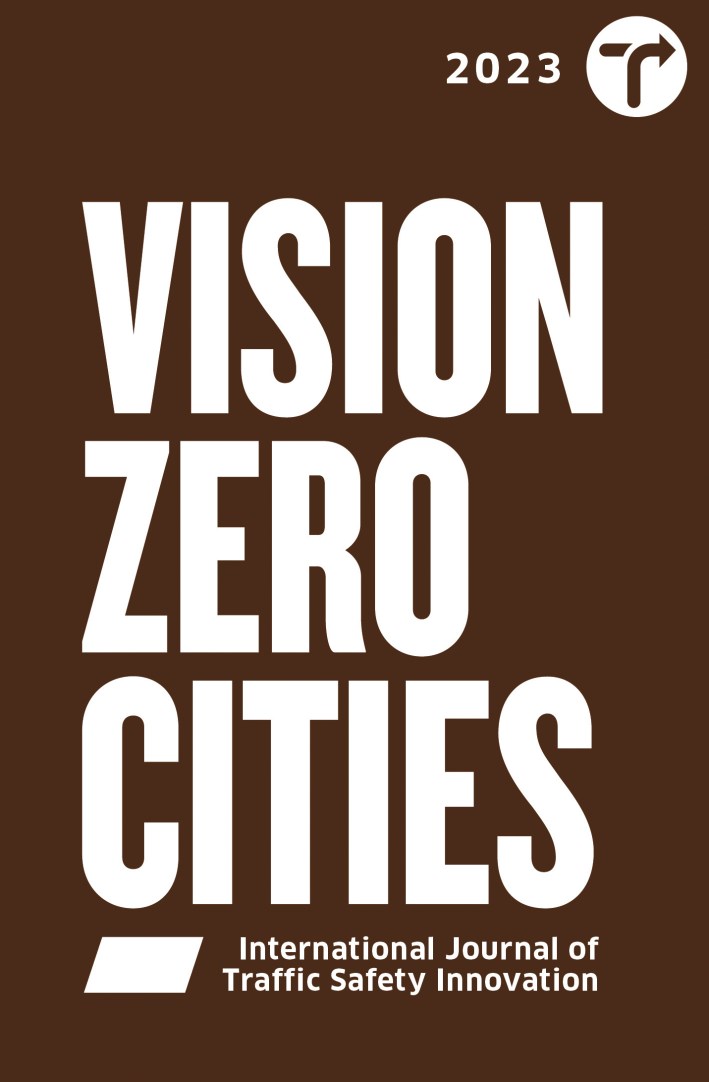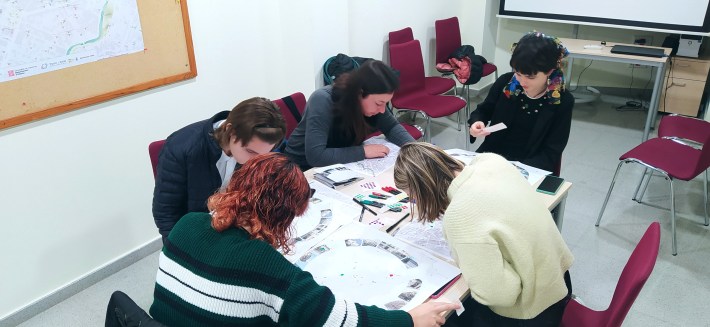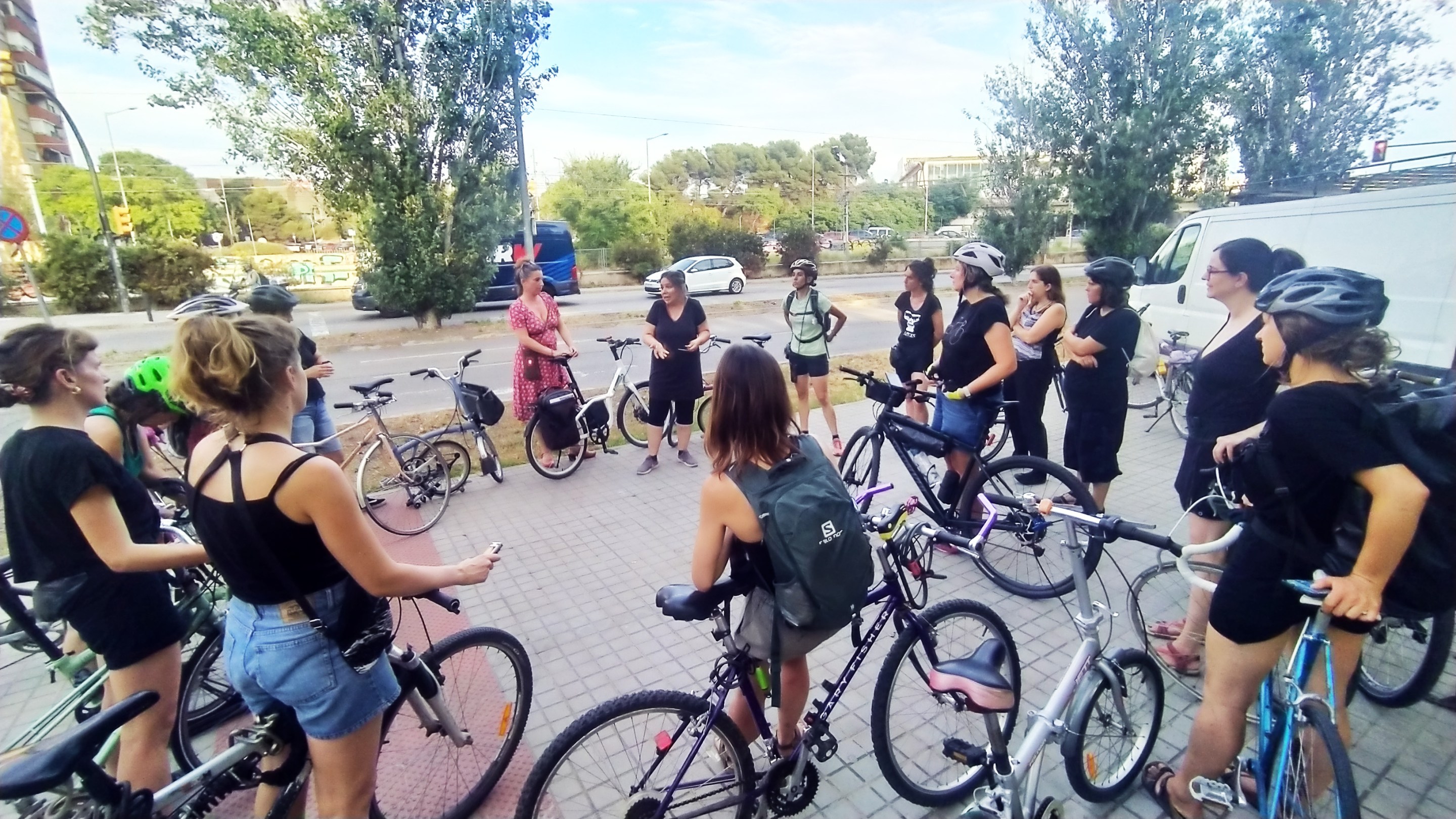Road safety is gendered. Gender-differentiated mobility patterns, as well as stereotyped road behaviors that reproduce hegemonic male roles associated with exposure to risk, speed, and a sense of immunity and immortality, are killing people.
According to the World Health Organization (WHO), men are more likely than women to be involved and killed in traffic crashes, especially as drivers of motorcycles and cars. But male behaviors also have a negative impact on women: women are disproportionately killed as pedestrians, often a consequence of men’s choices and driving behavior.

Women, men, and people with other gender identities have different mobility patterns. But transportation policies have been designed prioritizing androcentric, ethnocentric, and classist mobility systems, responding to the needs of a single model of a person: a white, able-bodied, middle-class adult male with a paid job who drives each morning from a residential suburb into the central business district and home each night. This model of mobility has privileged commuting for work in private motorized vehicles. Urban environments that require car dependency are inefficient – expensive to build, maintain, and participate in, and requiring vast amounts of space – but they’re also inequitable, inaccessible for many, environmentally catastrophic, and dangerous.
Consequently, mobility policies that prioritize men’s movement have built social and gender inequalities into our very streets. Although different urban disciplines have been calling for the integration of gender into mobility studies since the 1970s, transportation planning rarely considers gender identity, race, age, or ability. Even when mobility data is segregated by gender and age, an analysis from an intersectional feminist perspective is still often missing.
Mobility from a feminist perspective analyzes how gender relations and roles – and their intersection with other characteristics, such as race, age, income, and abilities – influence the use and enjoyment of our cities. In order to integrate a feminist perspective in mobility, Col·lectiu Punt6 since 2005 has been working in Catalonia, Spain, and Latin American cities in introducing a gender perspective in mobility policies, first on projects related to active mobility and in the last seven years with public transport agencies. We propose three areas of improvement: first, to advance towards gender equity and the inclusion of women in the planning, design, and management of mobility and transportation; second, to integrate into mobility planning a complete and diverse range of everyday activities and mobility needs in the productive, care, community, and personal spheres; and third, to broaden the concept of safety in mobility by addressing gender-based violence and different perceptions of safety. In this article, we focus on broadening the concept of safety.
Expanding the concept of safety
Integrating a feminist perspective requires going beyond the current concept of safety in mobility and analyzing how violence against women and other aggressions against people of color, LGTBIQ+ people, and people with disabilities condition perceptions of safety and limit the right of women and people with nonbinary identities to free and autonomous mobility.
Women continue to be socialized to be afraid of public space, of strangers, and, above all, of moving alone at night, although the greatest number of assaults continue to occur at home and by known people. Fear of public space is also fueled by the experiences of verbal and sexual harassment that women go through on a daily basis.
But safe and autonomous mobility must also guarantee road safety and the autonomous movement of children and the elderly, as well as universal accessibility, because the perception and reality of safety from traffic violence also depend on gender, age, race, ability, and more.

Roads are one of many spaces that are masculinized in our society. In 2002, the WHO issued a report stating that masculinity is detrimental to mental health. Male behaviors and choices, from driving fast to buying supersized pickup trucks, often create more danger on our streets. Society conditions these decisions by upholding hegemonic and normative male roles that encourage taking excessive risks and undervalue potential consequences, ultimately harming their and others’ health.
Women are impacted not only by road violence but also by gender-based and sexual harassment, especially as pedestrians and cyclists. Pedestrian fatalities and injuries are most likely to be older women in many cities. When women bike, research shows they see additional road harassment: in the UK, women on bikes are more likely to be narrowly missed by passing vehicles. The feminist perspective is essential to change road culture and make it more equitable and safer. Integrating this perspective into road safety leads to a better understanding of three gendered issues:
Differentiated mobility patterns with respect to road safety
Men, to a greater extent than women, use motorized vehicles such as cars or motorcycles and represent almost all professional drivers. They are more likely to make single-stop commuting trips on major roads, run fewer errands, and travel less with children due to their social privilege of not being assigned this responsibility.
In contrast, women move mostly on foot or by public transport, increasing their exposure to traffic crashes. They are more likely to make several stops in one journey to shop for groceries, pick up or drop off dependents, and run other errands, and are more likely to travel with minors or dependents due to their socially imposed role as caregivers.
The percentage of women with a driver's license is generally lower than that of men, and women are less likely to have access to a vehicle. When women do drive, they tend to travel shorter distances, make more stops, and drive more cautiously
Road behavior and risk exposure
According to the WHO, the main risk factors linked to road safety are speeding, driving under the influence of alcohol, failure to wear a helmet or seat belt, and distractions. These risk factors are mostly taken by men, in part a result of toxic masculinity. This contrasts with cultural ideals of femininity that emphasize women’s ethics of care — a fear of harming others, an awareness of risk and of the consequences of risky actions. Data indicates that men are associated with two to four times greater risk than women per kilometer traveled in vehicles, even when taking into account that men use cars and motorcycles more than women.

Impacts of road crashes: physical, social and economic impacts
Women have a 47% higher risk of severe trauma in a motor vehicle collision than men and a five times higher risk of neck sprain injuries. Most regulatory tests that assess vehicle occupant safety only use average (stereotyped) male models, and thus do not reflect the specific and diverse physical characteristics and needs of women.
Women are exposed to a double vulnerability because they have to run not only their own errands, but those of the household and their dependents, and because they walk more and are more exposed to sexual harassment and road violence as pedestrians. The economic impact of road crashes is also greater on women, adding up to 2-3% of global GDP.Women's economic dependence is worsened when a male family member is killed in a road crash or rendered unable to work because they often have to care for the injured and have lower incomes.
It is essential to change the mobility paradigm to incorporate an intersectional feminist perspective and move towards an equitable, sustainable, and safe mobility system. Changing the mobility paradigm also involves making visible and placing social value on women’s patterns of movement and developing mobility plans that reflect these behaviors. Women’s mobility patterns are scalable: providing the options to move sustainably, to make short trips locally, to allow caretakers and vulnerable groups to move around safely with autonomy and independence will benefit all residents, men included.






